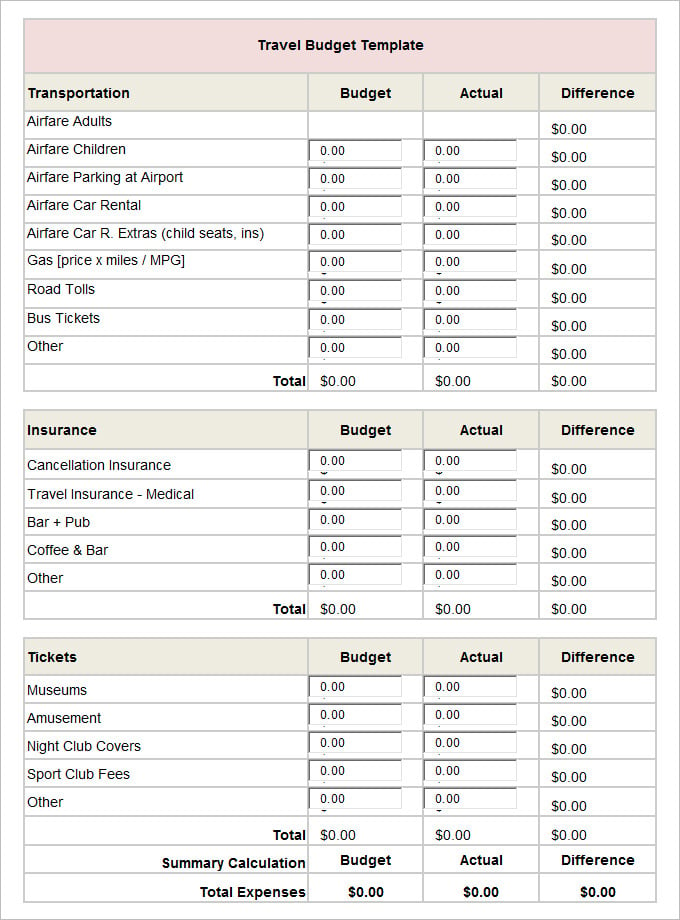
Planning a trip can be an exciting experience. From choosing the destination to creating an itinerary, there are so many things to consider. However, one crucial aspect that often gets overlooked is budgeting. Creating a travel budget is essential to ensure that you can make the most of your trip without breaking the bank.
In this article, we will guide you through the process of creating a travel budget that will help you stay organized and make informed decisions about your expenses.
What is a Travel Budget?
A travel budget is a tool that allows you to plan and track your expenses while traveling. It is a document that outlines all the necessary costs associated with your trip, such as transportation, accommodation, food, activities, and miscellaneous expenses. By creating a printable travel budget, you can set spending limits, allocate funds to different categories, and keep track of how much you are spending in real time.
Why Should You Create a Travel Budget?
Creating a printable travel budget has numerous benefits. Here are some reasons why you should consider making one:
- Financial Management: A travel budget helps you manage your finances effectively by setting spending limits and tracking expenses.
- Cost Control: By having a budget, you can prioritize your spending and avoid overspending on unnecessary items.
- Peace of Mind: Knowing that you have a budget in place gives you peace of mind and allows you to enjoy your trip without constantly worrying about money.
- Prevent Debt: A travel budget helps you avoid going into debt by ensuring that you only spend what you can afford.
- Save Money: By having a clear picture of your expenses, you can identify areas where you can cut costs and save money.
When Should You Create a Travel Budget?
It is best to create a travel budget as early as possible, preferably during the planning stage of your trip. This will give you ample time to research and gather information about the costs associated with your destination. However, if you have already started planning your trip and haven’t created a budget yet, it’s never too late to start. Even if you are already on your trip, a printable travel budget can still be useful in tracking and managing your expenses.
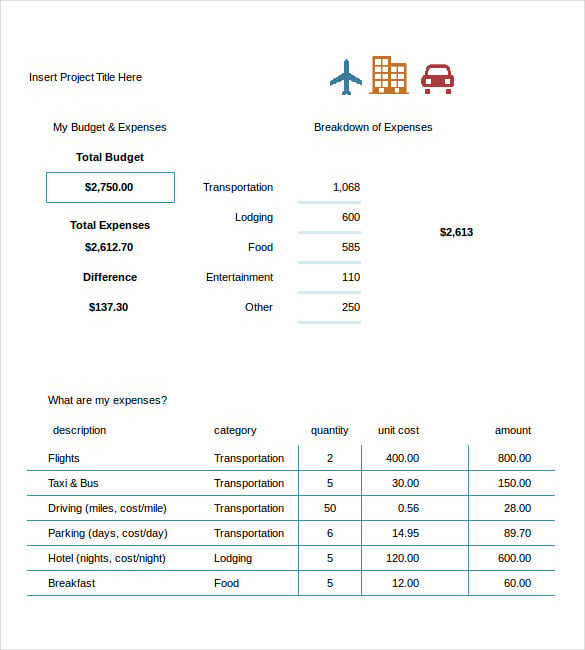
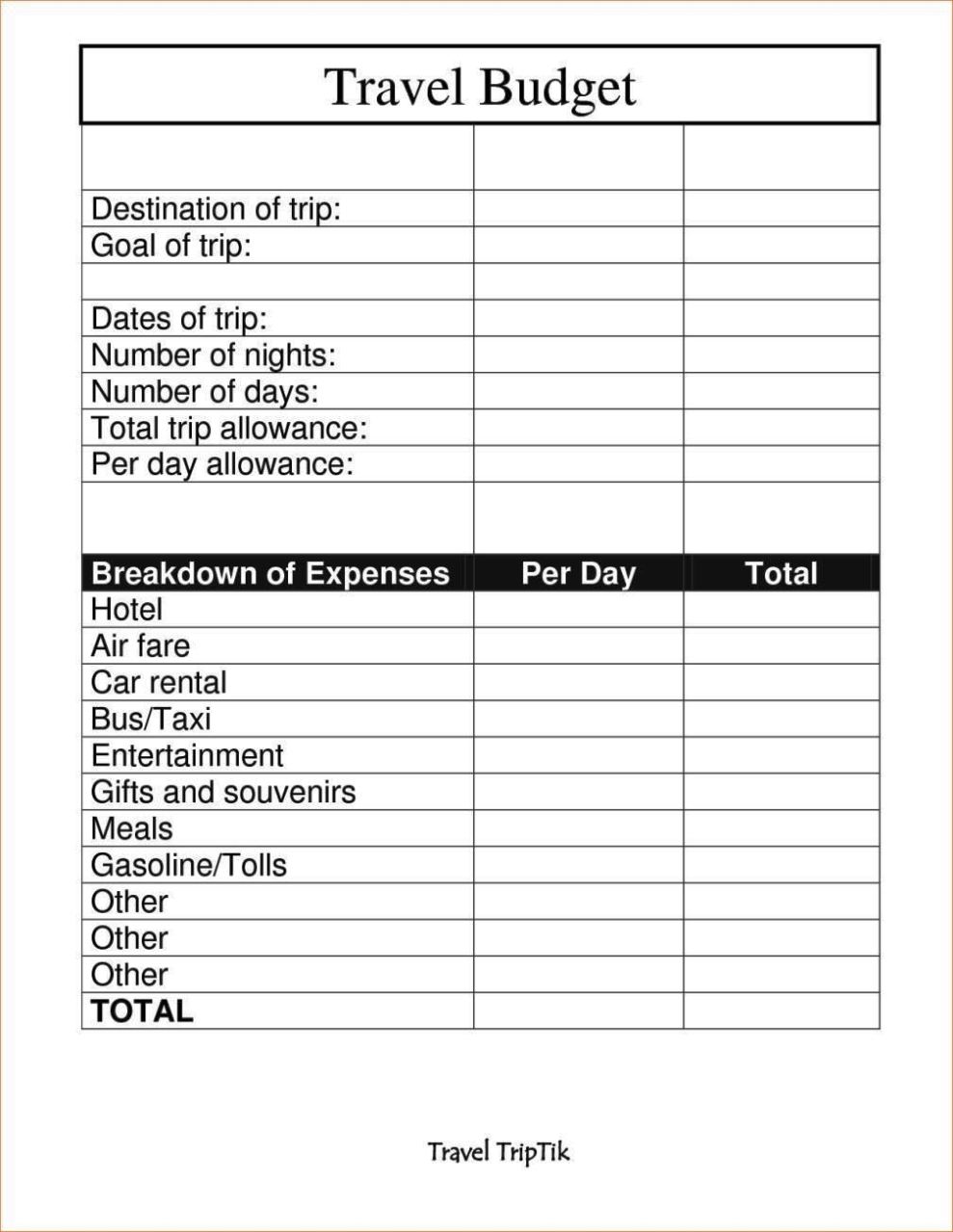
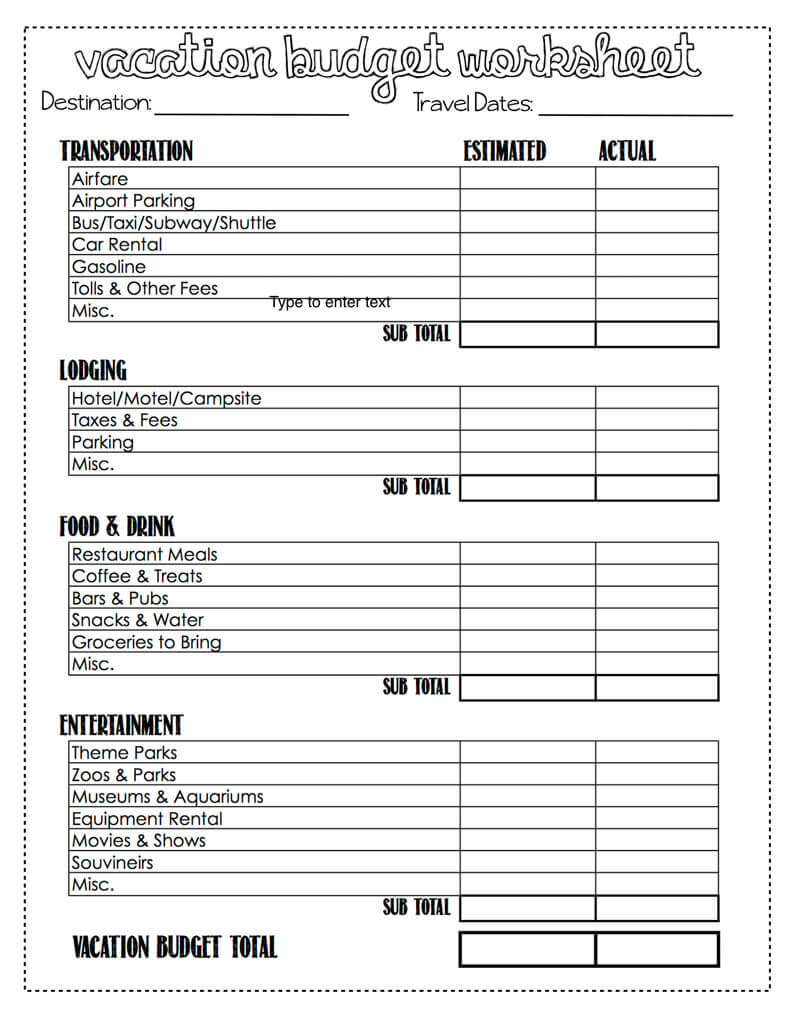
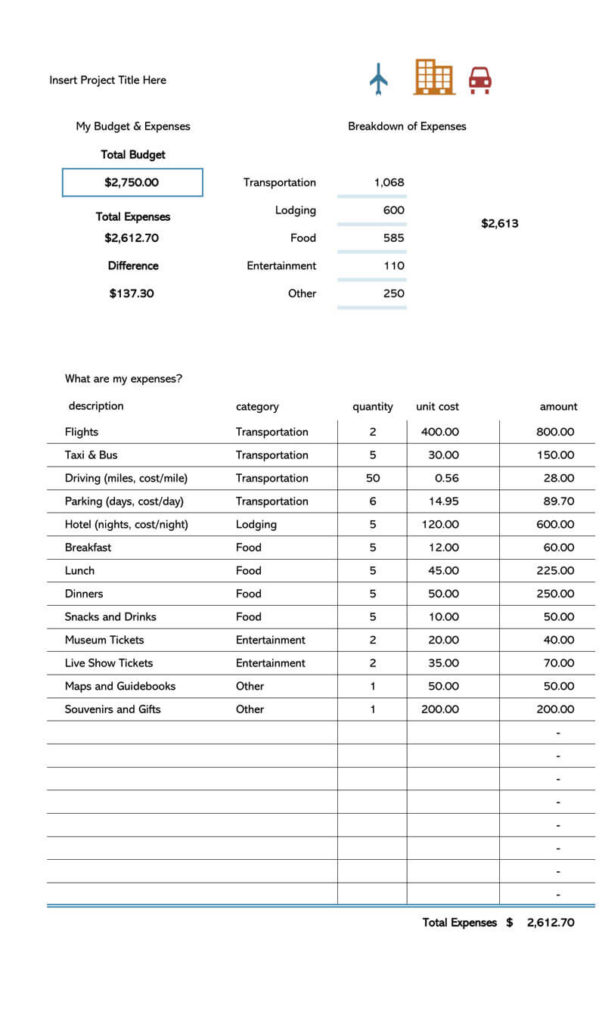
How to Create a Travel Budget
Creating a printable travel budget doesn’t have to be complicated. Follow these steps to create an effective and organized budget:
1. Determine your Trip Duration and Destination
Before you can start budgeting, you need to know how long you will be traveling and where you will be going. The duration and destination of your trip will greatly influence your expenses. Longer trips will generally require a larger budget, and some destinations may have higher costs of living than others. Research your destination to get an idea of the average daily expenses and adjust your budget accordingly.
2. Identify and Categorize your Expenses
Make a list of all the expenses you will incur during your trip. Some common expense categories include:
- Transportation: This includes flights, train tickets, car rentals, taxis, and any other transportation costs associated with getting to and around your destination.
- Accommodation: Research the cost of hotels, hostels, or vacation rentals in your destination. Don’t forget to consider any additional fees such as taxes or resort fees.
- Food and Drinks: Estimate your daily food expenses, including meals, snacks, and drinks. Consider trying local cuisine or cooking your meals to save money.
- Activities and Attractions: Research the cost of activities, tours, museums, and attractions in your destination. Make a list of the ones you are interested in and allocate a budget for them.
- Miscellaneous Expenses: This category includes any other expenses that don’t fit into the above categories, such as souvenirs, travel insurance, visa fees, or tips.
3. Research and Estimate Costs
Once you have identified your expense categories, research the average costs for each item. Use travel websites, forums, and guidebooks to get an idea of the prices. It’s always a good idea to overestimate the costs to ensure that you have enough funds.
4. Allocate Funds and Set Spending Limits
Based on your research and estimated costs, allocate funds to each expense category. This will give you a clear idea of how much you can spend on each item. Set spending limits for each category to avoid overspending.
5. Create a Printable Travel Budget Template
Design a printable travel budget template that suits your needs. You can use a spreadsheet program like Excel or Google Sheets or download a pre-made template from the internet. Include all the expense categories and allocate funds to each category.
6. Track and Update your Expenses
During your trip, keep track of all your expenses. This can be done manually by saving receipts or using expense-tracking apps. Update your printable travel budget regularly to see how much you have spent and how much you have left in each category.
7. Review and Adjust your Budget as Needed
Periodically review your budget to see if any adjustments are needed. If you are overspending in one category, you may need to cut costs in another category to stay within your overall budget. Be flexible and willing to make changes to ensure that your budget remains realistic.
8. Use your Printable Travel Budget Wisely
Your printable travel budget is a valuable tool that can help you make informed decisions about your expenses. Refer to it regularly and use it as a guide to ensure that you are staying within your budget. By using your budget wisely, you can have a stress-free and enjoyable trip.
Sample Travel Budget
Here is an example of what a travel budget could look like:
- Transportation: $800
- Accommodation: $1,200
- Food and Drinks: $600
- Activities and Attractions: $500
- Miscellaneous Expenses: $300
- Total Budget: $3,400
Tips for Creating a Travel Budget
Here are some additional tips to help you create a successful printable travel budget:
- Research: Take the time to research your destination and gather as much information as possible about the costs associated with it.
- Be Realistic: Be honest with yourself about your spending habits and set realistic budgets for each category.
- Leave Room for Flexibility: Unexpected expenses may arise during your trip, so it’s important to leave some room in your budget for emergencies.
- Track Expenses: Keep track of all your expenses, no matter how small. This will help you stay organized and ensure that you don’t overspend.
- Review and Adjust: Periodically review your budget and make adjustments as needed. Be flexible and willing to adapt to changing circumstances.
- Save Money: Look for ways to save money during your trip, such as booking accommodations in advance, cooking your meals, or using public transportation.
By following these tips and creating a printable travel budget, you can take control of your finances and ensure that you have a memorable and stress-free trip. Happy travels!
Travel Budget Template – Excel